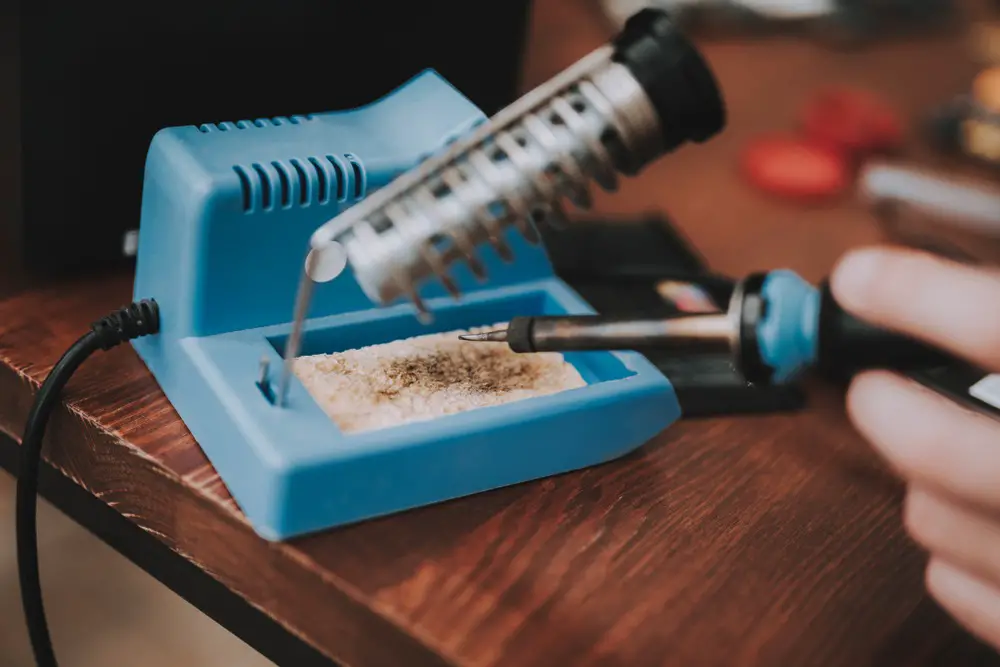A soldering iron is an essential tool for soldering applications. As such, it is important to take good care of it to prolong its life and ensure it delivers optimal performance. Here are some tips to help you take care of a soldering iron:
Use High-quality Solder
The best way to keep the iron operating optimally is to use high-quality solder. It melts fast and at the expected temperature and is free of impurities. Low-quality solder has contaminants that make it difficult to transfer heat to the workpiece. Buying solder from reputable brands is the surest way of getting high-quality solder.
Testing the solder before use should also help you determine if the solder is high-quality or low-quality. Tin/lead alloy solder, for example, melts at 460 degrees Fahrenheit. Also, solder that contains lead is shiny, but low-quality solder has a matte appearance.
Note that there are different types of solder, and they react differently when melted. Lead-free solder, for example, takes on a matte look when heated. As such, it is essential to check the manufacturer’s description to ensure it is performing as expected.
Avoid Using Excessive Heat
The main component of a soldering iron is the heater coil or the heating element. Operating a soldering iron at a higher temperature can cause the coil to burn leading to premature failure of the iron.
As such, it is essential to maintain the optimal operating temperature (usually indicated on the manufacturer details). A regular lead solder iron, for example, operates at an optimal temperature of 300 degrees Celsius.
High temperature also affects the life of the tip. Naturally, the temperature of the tip reduces when using the iron. To compensate for this imbalance, users increase the heat to more than it is needed, which reduces the life of the tip and sometimes delivers sub-optimal results. It explains why some users opt for irons fitted with temperature sensors.
Such devices can sense when the temperature is out of range and will adjust automatically. The sensors also have a recovery time feature that enables the tip to resume normal or the desired temperature for the task. Alternatively, you can fine-tune the heat to an ‘idle’ setting or turn the unit off if you are not using the device for extended periods.
Turn Off the Iron When Not in Use
Leaving the iron on even when not in use increases the wear and tear of the iron. To prolong its life, it is essential to turn it off as soon as you are done with the task. Modern soldering irons and stations have an auto-sleep feature that helps extend the life of the iron while providing a safer working environment by turning off the device when not in use.
Remove Metal Oxide using flux
Metal oxides build up on soldering tips when they come into contact with oxygen in the air. The layer prevents the solder from wetting the joint adequately, affecting the quality of the soldering joint. An oxidized tip has a black or brown coating as a result of the burnout.
Flux removes the oxidation layer by dissolving it and causing it to evaporate once it attains the boiling point. However, users are warned against dipping the tips into flux when cleaning them as it is corrosive. Water-soluble fluxes are mainly known to damage the tips at high temperatures.
As such, they are only used in projects that need wave soldering, but they are immediately followed up by a thorough clean to rid off excess flux residue left on the circuit boards. You may also use no-clean flux on soldering parts that need little or no cleaning. This type of cleaning is not as thorough and may not remove oxidation from the soldering iron tips.
Adjust the Temperature When Changing the Solder Types
Lead-free soldering irons operate at a higher temperature than regular irons. If you are switching back to a standard solder, it is essential to adjust the heat too. Otherwise, you will operate the device at a higher temperature than what is required leading to premature failure of the soldering iron.
Replace a Worn Out Soldering Iron
Soldering irons that are used frequently are likely to wear out fast, hence the need to replace them regularly. Even when you have taken good care of the iron, it is still prone to aging. A worn-out iron grows thermally erratic, becomes unpredictable, and destroys components. If your soldering iron is exhibiting any of these signs, it may be time to replace it.


